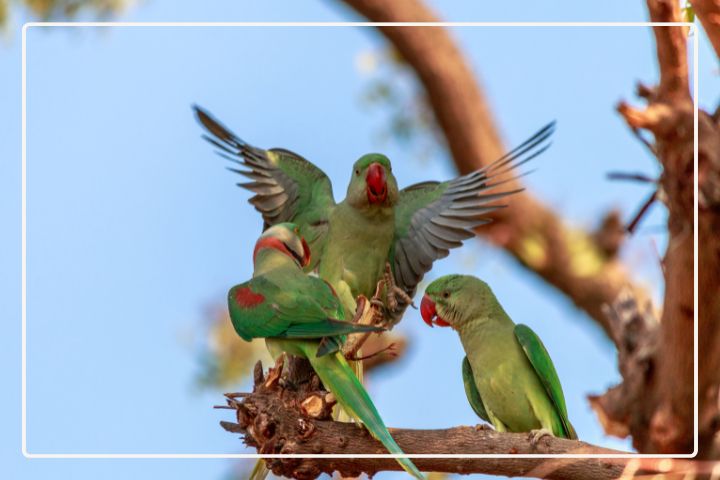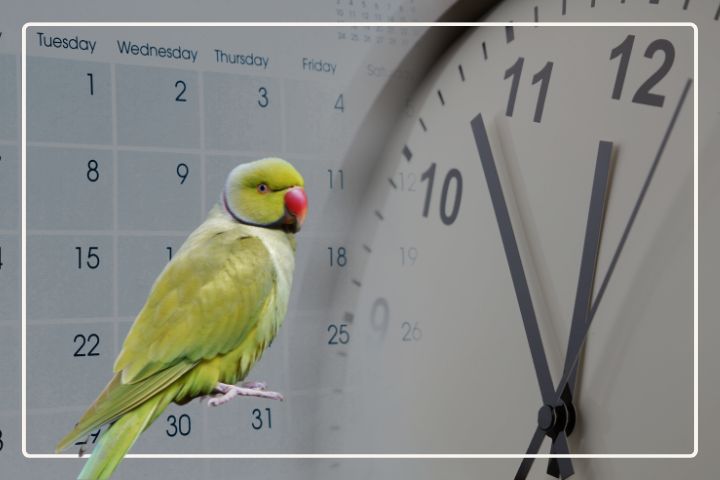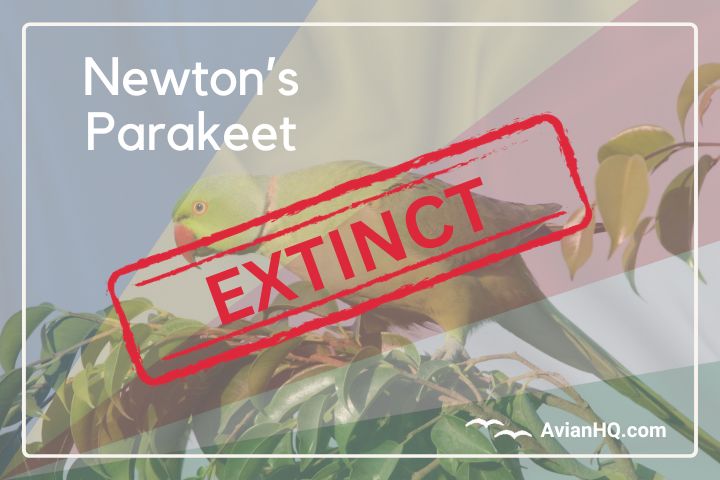Can Alexandrine Parrots Live With Other Birds?
The Alexandrine parakeet, also known as the Alexandrine parrot, is a large species of parrot native to South and Southeast Asia. With their distinctive green plumage, red beaks, and long tapering tails, these intelligent and active birds have become popular pets around the world.
Alexandrines are highly social with a natural tendency to live in large flocks in the wild. They thrive when housed together with other Alexandrine parakeets as bonded pairs or larger groups. However, due to their sometimes aggressive or territorial nature, many owners wonder whether Alexandrines can successfully live alongside other bird species as well.
In captivity, Alexandrine parakeets have the potential to live harmoniously with a variety of other birds when matched carefully based on personality and proper introductions. However, there are also risks associated with interspecies cohabitation that require special considerations.
Below, we’ll take a deeper look at the key factors that impact compatibility when housing Alexandrine parrots with other avian species. We’ll also explore the potential benefits and drawbacks of creating mixed species aviaries or cages for these intelligent parrots.
Factors That Affect Compatibility
Successfully housing Alexandrine parakeets with other types of birds depends on a variety of considerations:
Alexandrine Parakeet Temperament
While Alexandrines are social flock birds, they can exhibit aggressive behaviors or become territorial in captivity, especially during breeding season. Their temperament varies greatly between individual birds, with some acting fearful or shy while others are bold and assertive. Early socialization and training helps minimize problematic behaviors. Targeted behavioral modification techniques may be needed for parakeets prone to biting or lunging at other birds.
Other Birds’ Temperaments
The best matches for sharing space with Alexandrine parakeets are other medium to large parrot species with similar activity levels and flocking instincts. Some examples of compatible species may include Indian ringnecks, cockatiels, conures, and Eclectus parrots. Loud, hyperactive, or nippy birds are likely to irritate Alexandrines. Extremely small, timid birds could become frightened or injured. Birds that prefer to bond to a human rather than a flock are also questionable matches.
Cage Size and Setup
Introducing birds in a cramped cage often leads to conflict over territory. Larger aviaries provide more space to accommodate multiple perches, food bowls, and toys while allowing parakeets to keep a comfortable distance as needed. Strategic use of dividers, perch placement, and visual barriers can also create a sense of separate spaces within the same enclosure.
Introductions and Monitoring
All new bird introductions should be performed gradually in neutral territory to avoid territorial disputes. Owners should observe interactions closely during initial periods and be prepared to separate the parakeets if there are signs of persistent aggression or stress. Providing duplicate food, water, and perching resources reduces squabbles over necessities. With time and continued positive encounters, parakeets often learn to accept familiar flockmates.
Benefits of Housing Alexandrines with Other Birds
Providing companion birds for Alexandrine parakeets can offer several advantages:

Social Enrichment
Alexandrines are intelligent flock parrots that thrive when they have opportunities for social interaction. Housing parakeets together allows them to engage in beneficial activities like preening, playing, and vocalizing together. This provides mental enrichment and reduces undesirable solitary behaviors like screaming or feather plucking.
Reduced Stress and Boredom
Spending time housed alone can be stressful and boring for these naturally social parrots. The presence of other birds creates a stimulating and engaging environment that keeps Alexandrines active. Mixed species groups encourage more natural foraging, exercise, and exploration than single housing.
Bonding and Flock Dynamics
Some Alexandrine parrots form close bonds with other birds, becoming inseparable companions. Bonded parakeets often exhibit bonding behaviors like regurgitative feeding and sleeping side-by-side. Flocks of parakeets may also develop complex social structures and relationships that are interesting to observe.
More Naturalistic Setting
Housing compatible species together creates a dynamic, naturalistic environment that brings out more wild-type behaviors in Alexandrine parakeets and other birds. The variety and activity promotes optimal wellbeing.
Risks and Challenges
However, housing Alexandrines with other bird species also poses some potential downsides:
Aggressive Encounters
Even carefully supervised introductions can sometimes result in aggressive biting, lunging, or fighting between birds. These attacks can cause injuries, stress, or even death in smaller or more timid birds.
Stress and Anxiety
Some individual parakeets may feel perpetually threatened or fearful around other birds. This constant state of stress takes a toll and may lead to feather damaging behaviors. Birds pushing each other away from food and perches is also detrimental.
Competition Over Resources
When housed together, birds may compete over food, favored perches or toys. Without adequate duplicates, bullied birds can become undernourished and lose condition. Quarrels may also erupt between bonded pairs and other birds.
Difficulty Separating
Birds that have bonded closely together often show signs of extreme stress like excessive screaming or refusing food when separated. Some bonded pairs continue mating behaviors that can be problematic in a mixed aviary.
Need for Ongoing Vigilance
Even compatible groups will have occasional tiffs. Owners must continually monitor all interactions between birds for signs of changing dynamics or emerging problems. Separating parakeets promptly at the first sign of persistent trouble is key.
Key Considerations When Housing Alexandrines with Other Birds
If attempting to house Alexandrine parakeets with other avian species, keep the following important considerations in mind:

- Start with slow, gradual introductions in a neutral space to minimize territorial disputes. Never make introductions inside an existing bird’s enclosure.
- Select companion birds with relatively similar size, activity levels, and flocking instincts. Avoid loud, aggressive, or very timid species.
- Provide a very large cage or aviary to allow personal space and visual barriers between birds when needed.
- Offer duplicate food bowls, water, perches, and toys to prevent resource guarding.
- Monitor all interactions extremely closely for any signs of aggression or stress. Be prepared to separate immediately.
- Personality compatibility and supervision are more important factors than exact species when choosing companions.
- Account for existing bonded pairs that may not accept new birds. Never separate bonded birds.
- Look for positive flocking behaviors like sleeping near each other, preening, or playing.
- Ensure no parakeet is being excluded from food, water or perches or they could become ill.
- Continually optimize the environment and address any emerging issues promptly.
Conclusion
Alexandrine parakeets are highly intelligent, active birds that generally appreciate social interaction with other pets when properly introduced. Housing Alexandrines with compatible species like cockatiels, ringnecks and conures provides environmental enrichment and companionship. However, all new avian introductions pose some risks that require careful preparation and ongoing vigilance.
By selecting suitable companion species, starting introductions slowly in neutral spaces, monitoring closely, and providing a spacious well-equipped enclosure, Alexandrine parrots can potentially thrive in mixed species aviaries. With careful planning and supervision, the benefits of flock life often outweigh the added responsibilities of interspecies cohabitation for these naturally social parrots.







I really enjoy studying on this site, it has wonderful posts. “Never fight an inanimate object.” by P. J. O’Rourke.